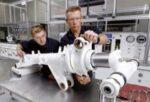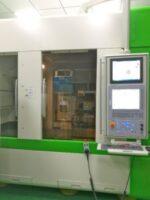ThingWorx enables smart manufacturing
China International Marine Containers (Group) Ltd. a world leading supplier of logistics and energy equipment, has successfully launched its smart manufacturing pilot project, ‘IoT + MES,’ built on PTC’s ThingWorx Industrial Innovation Platform. Echoing the concept of ‘Made in China 2025’ and efforts to promote the deep integration of the Internet, big data, artificial intelligence, and the real economy, CIMC has been committed to innovation and promoting the development of smart manufacturing. Its subsidiary, Qingdao CIMC Reefer Container Manufacture Co., Ltd, took the lead in piloting the integration of IoT and Manufacturing Execution Systems (MES). As the overall platform for the QCRC pilot project, ThingWorx will connect to the company’s MES to form an integrated factory information platform and data application consumption platform to achieve full-course visual operations, conduct big data analysis of major technologies, and ultimately help reduce operating costs and increase production efficiency. ThingWorx is the industry leading, award-winning Industrial Innovation Platform from PTC that includes technologies and tools that enable users to rapidly develop, deploy, and extend apps and augmented reality experiences. ThingWorx contains a broad set of features, including a variety of connectivity options, application development tools, and analytics all built around a single, real-time view of a physical object in the digital world. Thus, ThingWorx supports remote data collection of connected devices, enables independent and secure connection between devices, manages devices/sensors, and integrates with multiple enterprise-level systems. The big data learning and analysis function in ThingWorx will also enable predictive maintenance and reduce energy consumption and unplanned downtime of those devices. QCRC project leaders will be able to understand the factory’s operations, abnormalities, and warnings in real-time, as well as future production trends. The QCRC pilot project, ‘IoT + MES,’ is a case where information technology is used to solve the problem in business management. […]










